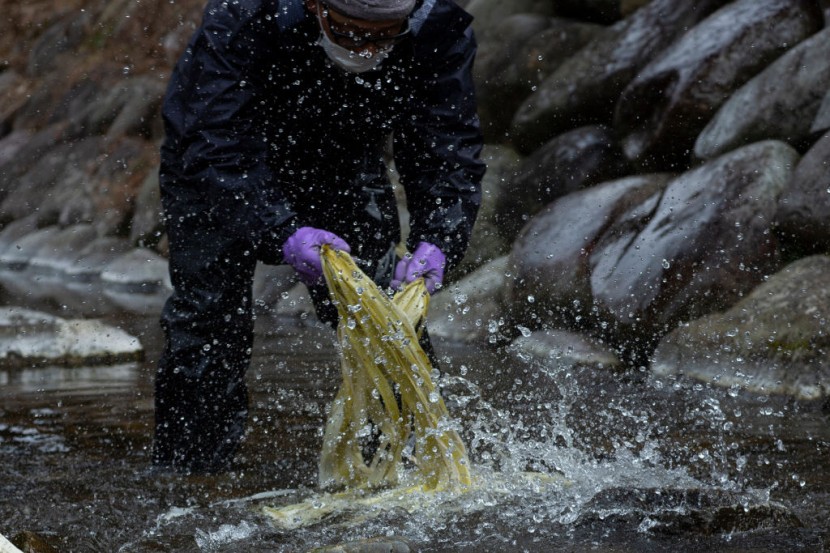
On Wednesday morning, a river in western Japan suddenly turned bright lime green, causing concern among locals and prompting an investigation.
A video obtained by Reuters and shared on social media shows an Ikoma, Nara Prefecture, a local woman walking her small dog along the curiously colored Tatsuta River. The woman said that the situation was alarming.
Japan River Turns Bright Green
The Tatsuta River, according to the travel company Navitime, connects Ikoma City, Heguri Town, and Ikaruga Town and is a "beautiful destination mentioned in ancient poetry."
Per CBS News, the river is also a "famous location to observe autumn foliage." It is depicted in "Autumn: The Tatsuta River" by the Philadelphia Museum of Art and "Yamato Province: Tatsuta Mountain and Tatsuta River (Yamato, Tatsutayama, Tatsutagawa)" by Hiroshige in 1853.
At 5:00 a.m. local time, the colored water was initially reported, and by 6:30 a.m., the Environmental Conservation Division of the city had arrived to conduct additional examinations.
However, by Wednesday evening local time, officials revealed that sodium fluorescein, "the principal coloring agent used in bath salts," was responsible for the sudden color change.
According to them, the river contained remnants of the crimson substance that "rendered green when exposed to water."
The National Institutes of Health report that sodium fluorescein is an innocuous, colorless, orange-red to dark-red substance.
There have been no reports of adverse health effects associated with the river, and officials have stated that the substance poses no known hazards. The prohibition against its use in agriculture was lifted.
The incident occurred days after a different body of water in Japan assumed an unusual hue. Water at a port in Okinawa's Nago city turned blood red last week, with some describing the transformation as "gruesome" and "venomous."
Propylene glycol, which the CDC describes as a "synthetic liquid substance that absorbs water," had leaked into the river from Orion Breweries' refrigeration system. According to the CDC, the substance "mixes entirely with water" and degrades "relatively quickly" in water and detritus over the course of several days to a week.
A video uploaded to social media by a local inhabitant depicts a section of the Tatsuta River on Wednesday. The Ikoma city council has requested that the water not be used for agricultural purposes until its safety is confirmed, as per CTV News.
UN Approves Japan's Radioactive Water Disposal Plan
The news comes after the United Nations approved Japan's highly anticipated waste disposal plan, which includes the gradual release of treated, radioactive water into the ocean.
According to the UN agency for atomic energy, the initiative, first announced in 2021, complies with international standards and will have negligible effects on the marine environment and public health.
The discharge technique has been criticized by fisheries in Japan and adjacent countries, increasing seafood demand in the region. Since the 2011 earthquake and tsunami, the facility has collected, treated, and stored contaminated water in containers. According to the Associated Press, the capacity of approximately 1,000 containers will be reached in early 2024.
The Japanese government announced in 2021 that it would release the radioactive water into the sea over decades. According to them, the water must be evacuated to prevent further leaks and to prepare for the decommissioning of the damaged facility.
The treated contaminated water will be discharged 1,000 yards offshore through an underwater conduit after the plant's owner receives a permit in approximately one week.
The report submitted by UN experts on Tuesday is the group's conclusive evaluation of the water disposal project. In an executive summary, UN leaders stated that the Japanese government devised a plan to dispose of contaminated water in the ocean and that the international organization does not inherently support the concept.
© 2025 HNGN, All rights reserved. Do not reproduce without permission.








